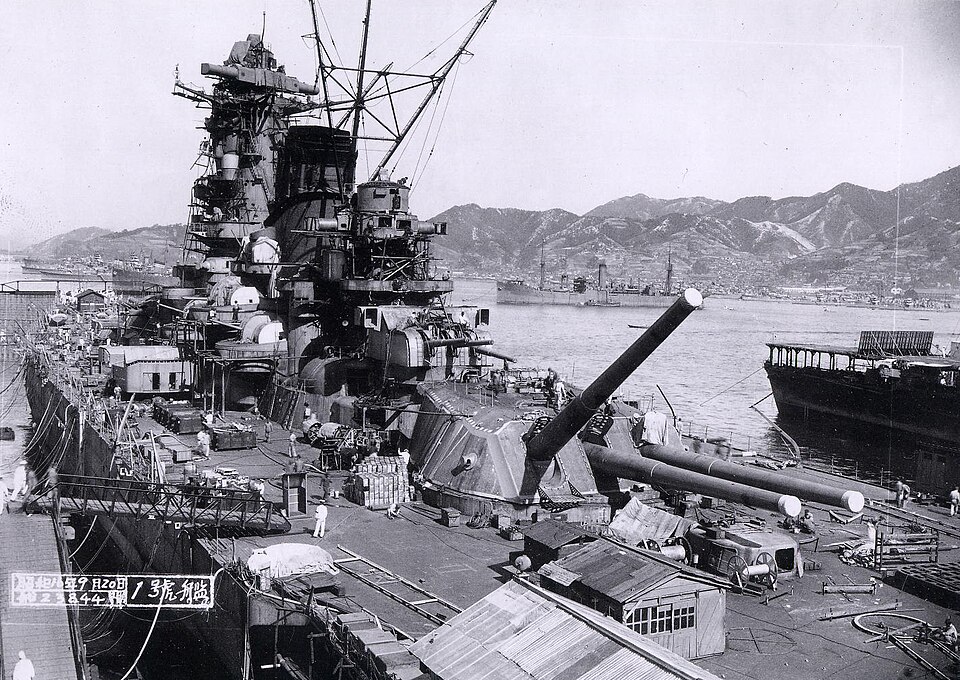The Impossible Guns of the Battleship Yamato: A Lost WWII Super-Technology?
The Impossible Guns of the Battleship Yamato: A Lost WWII Super-Technology?

In the annals of military history, the Imperial Japanese Navy’s Battleship Yamato stands as a titan. At 263 meters long and displacing over 64,000 tons, she was the largest and most powerful battleship ever built. But her true legend lay in her armament: the nine 46cm (18.1-inch) main guns, the largest naval guns ever fitted to a warship. They were a marvel of engineering, a symbol of ultimate power. And today, with all our advanced technology, they are impossible to recreate. This is the story of a true piece of “lost technology.”
A Feat of Engineering We Can No Longer Match
The concept of “lost technology” often brings to mind ancient mysteries like Damascus steel or Greek fire. But one of the most compelling examples comes from the 20th century. Much like the difference between ancient kotō (old swords) and modern shintō (new swords) in Japanese swordsmithing—where the ancient blades possess a resilience and sharpness that cannot be perfectly replicated today—the Yamato’s guns represent a lost art.
To build these colossal cannons, three essential components were required: a specialized lathe, a unique type of steel, and, most importantly, master craftsmen with irreplaceable skills.
The Three Pieces of a Lost Puzzle
1. The Machine: The giant lathe used to craft the gun barrels was a monster in its own right—5 meters wide, 5 meters tall, and weighing 219 tons. Incredibly, this colossal machine miraculously survived the war and still exists today, perfectly preserved and reportedly in working condition. So, the tool is not the problem.
2. The Material: The steel used for the guns was a special blend known as “Mutsu Iron.” While the production of this specific steel is extremely limited today, the manufacturing process is not lost. With enough resources and effort, the material could, theoretically, be produced again.
3. The Master Craftsmen: Here lies the true heart of the mystery. The immense power of the Yamato’s guns required the use of the hardest steel available at the time. However, cutting and shaping such hard metal generates intense frictional heat, which can weaken the steel’s integrity. To forge a barrel that was both perfectly shaped and incredibly durable, the craftsmen had to perform a delicate dance of cutting and cooling with masterful precision.
There were no computers or advanced sensors to guide them. It was all down to the intuitive genius of the craftsmen—their ability to “read” the steel, to know by sight, sound, and feel the exact moment to apply coolant, the perfect speed for the cut. This was not just manufacturing; it was an art form, a skill passed down through masters and honed over a lifetime. This human element, this irreplaceable expertise, is what makes recreating the guns impossible today. Those masters are gone, and their intuitive art died with them.

Not “Lost,” but “Abandoned”: The Tragic Legacy of the Yamato
Why was this incredible technology never passed down? The answer is less mysterious, but perhaps more poignant: it was simply no longer needed.
By the end of World War II, the age of the battleship was over. The rise of aircraft carriers, missiles, and rockets rendered giant naval guns obsolete. In the decades that followed, technology advanced to the point where a modern naval gun with half the caliber could achieve the same destructive power as the Yamato’s behemoths.
The Yamato herself is a symbol of this tragic transition. Built at enormous expense, she was a “final weapon” held in reserve, seeing little actual combat. She was born obsolete, a magnificent dinosaur in the new age of naval warfare. On her final, desperate mission to Okinawa, she was sunk by waves of US aircraft, a testament to the changing tides of war.
In the end, the technology to build her guns was not so much “lost” as it was “abandoned.” It was the pinnacle of a technological path that the world had decided to leave behind. The impossible guns of the Yamato remain a powerful monument to the incredible heights of human craftsmanship—and a somber reminder of how quickly the tides of progress can wash even the greatest achievements away.
※ Unauthorized reproduction, video creation, and uploading of this article's content to YouTube, blogs, or other platforms is strictly prohibited.
Related Articles

The Lost Pyramid of Japan: Does Mt. Ashitake Hold the Secret to the World’s Oldest Pyramid?

The Spear of the Gods: The Enduring Mystery of Japan’s “Heavenly Reversed Halberd”

The Emperor’s Secret: Does Japan’s Largest Tomb Hold Proof of the Lost Tribes of Israel?

The Nikoro Incident: Japan’s Bizarre Alien Abduction by a Four-Legged, Octopus-Like Being
Popular Series
This is the page for The Impossible Guns of the Battleship Yamato: A Lost WWII Super-Technology?. Find the latest news about WWⅡ, LostTechnology, JapaneseHistory and more on TOCANA - the paranormal news media that stimulates your curiosity
Urban Legends Latest Articles
The Definitive Guide to Japan's Scariest Urban Legends: From Kuchisake-Onna to Kisaragi Station
2025.10.20 23:00 Urban LegendsKunekune: The Definitive Guide to Japan's Terrifying, Twisting Field Monster
2025.10.19 23:00 Urban LegendsNNN Special Broadcast: The Definitive Guide to Japan's Lost, Lethal TV Broadcast
2025.10.14 23:00 Urban Legends






